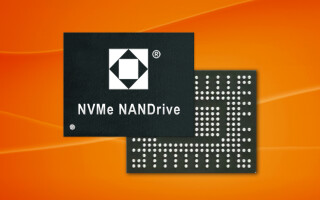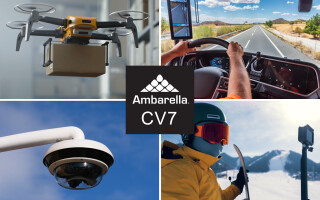Next-Generation Voice Assisted Solutions
October 12, 2022
Blog

In recent years, voice technology has steadily increased in popularity, from voice control in vehicles to smart speakers in homes. A voice assistant solution is built using machine learning, NLP (Natural Language Processing), and voice recognition technology. These solutions merge cloud computing to combine AI and can converse with the end users in natural language.
As modern buyers continue to want simplicity and user-friendly voice-enabled interactions, businesses now consider designing and implementing a conversational-first approach to forge closer bonds with them. According to Market Research Future, the global voice assistant market is predicted to reach USD 30.74 Billion by the end of 2030, with a CAGR of 31.2 % from 2020 to 2030. Voice assistants have a bright future and will get better at understanding the context of instructions, phrases, meanings, and will be able to help us in a unique and more customized manner.
Voice Assisted Solution Model
A voice assistant model uses voice recognition and synthesis to listen to specific voice commands and perform specific functions as requested by the user. A voice assistant system comprises different stages starting with automatic speech recognition which entitles the device to identify and translate voice from speech to text. Afterward, text interpretation is performed using NLP (Natural Language Processing) which analyzes speech in text form and understands the user’s intent, once the intent has been identified the desired action is carried through API (Application Programming Interface) connection and returned to the user as feedback using Text-to-Speech (TTS) technology.

Voice Assistant Solution Model
With the emergence of advanced AI technologies, companies may create synthetic speech that sounds like a human voice to resolve customer queries more effectively. Businesses across a variety of industries, including retail, automotive, media & entertainment, and healthcare, are realizing the benefits of the technology and are using it to provide better, and more individualized customer experiences.
Applications of Voice Assisted Solutions
Automotive
Automakers are ensuring that their vehicles have the latest speech AI technology to suit customer demands and expectations, as more consumers desire in-car voice assistants. Voice assistant system can be easily integrated into the vehicle’s HMI (Human Machine Interface) through which different vehicle functions like music playback, windows adjustments, temperature control, and smartphone connectivity can be operated quite conveniently.
With the use of voice assistant, setting up the destination in the navigation system can be performed by voice commands. It also assists in calling other people without the use of any physical interference, as well as operating entertainment services that reduces the chances of driver distraction which lowers the number of accident cases. In addition, the voice assistant can communicate information to the victim's family and the closest medical facility in the event of an accident. As a result, the level of safety is increased. With the advancement of AI in the fields of text-to-speech, NLP automakers can use different modes of voice as instructions depending on the driver’s situation. Auto manufacturers who want to stay ahead of the competition should seriously consider investing in voice AI technology.
Media & Entertainment
The media & entertainment sector is utilizing voice assistants to offer people a tailored experience, rapid access to their favourite media, and quick, relevant search results. Voice assistants facilitate a rich and immersive experience with features like media asset management and interactive media where with voice instructions one can access all the media content. Users of voice assistants can control music, adjust the volume up and down, and skip tracks. In the case of smart TVs equipped with cutting-edge speech AI technology, they can comprehend difficult and compound inquiries as well as remember questions that have already been asked, making them more interesting and conversational. Voice assistants are also being used by entertainment apps to provide hands-free, rapid, and convenient user experiences for either the entire app or a specific feature.
Home Automation
It is now possible to use voice-controlled systems and devices to automate routine tasks because of technological breakthroughs. Having voice-controlled home automation gives you the ability to group all your home's smart gadgets. Along with providing a remote-control option for entertainment devices like radios, music and songs, audiobooks, podcasts, etc., it assists with managing tasks like turning on and off the lights, fans, AC, door locks, curtains, etc. Home automation systems like Alexa and Google Home boost overall efficiency and can connect with several devices hassle-free. In addition, the integration of voice commands into the installation of such home automation with voice control offers greater security alternatives by streamlining the available security options. It helps reduce human efforts, especially for the elderly and disabled people.
Consumer Industry
As more voice-activated devices enter the market and more electronics makers start to integrate voice capability into current products and services, the popularity of voice assistants in the consumer industry is only anticipated to increase. Consumers will increasingly prefer using this technology to engage with their devices such as refrigerators, smart TVs, air conditioners, and all kinds of gadgets it comes up with in this era. Voice integrations make entertainment and social interaction more accessible to those with physical disabilities. Through information lookups, reminders, and routines to make calls, read/send emails, etc., they can help persons with memory impairments. Some of the areas under consumer electronics that are rapidly becoming popular with the inception of voice technology are smart wearable & fitness tracking, smart security & surveillance system, and digital personal assistants.
Voice assistants are becoming increasingly popular due to their capabilities that cut down on handling time and costs while maintaining accuracy and precision. They are getting better at decoding questions to provide timely, relevant answers. There are numerous opportunities for far richer and more in-depth interactions with clients. Voice assistants are becoming a technology that can’t be missed out on, especially with the eventual rollout of 5G and the advancement in machine learning.
Srinivas is a Marketing professional at Softnautics working on techno-commercial write-ups, marketing research and trend analysis. He is a marketing enthusiast with 6+ years of experience belonging to diversified industries. He loves to travel and is fond of adventures.





